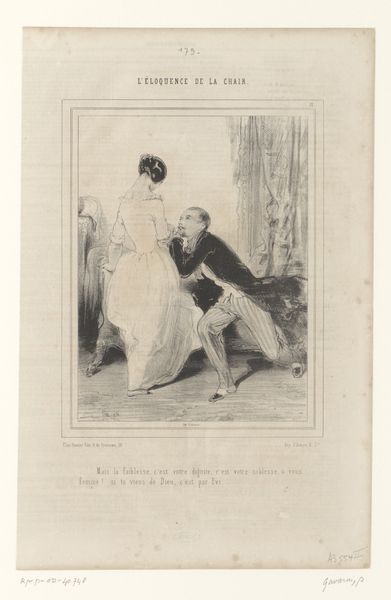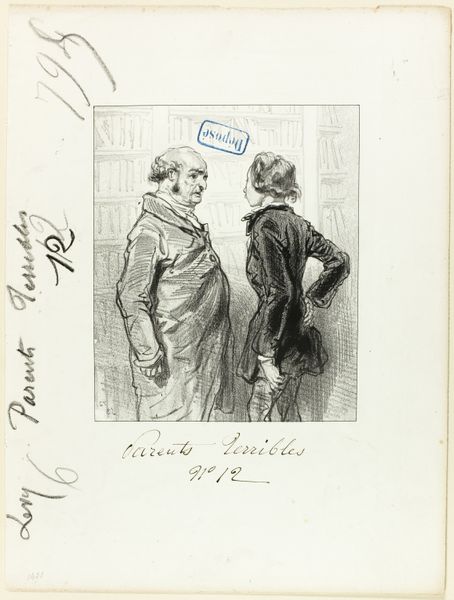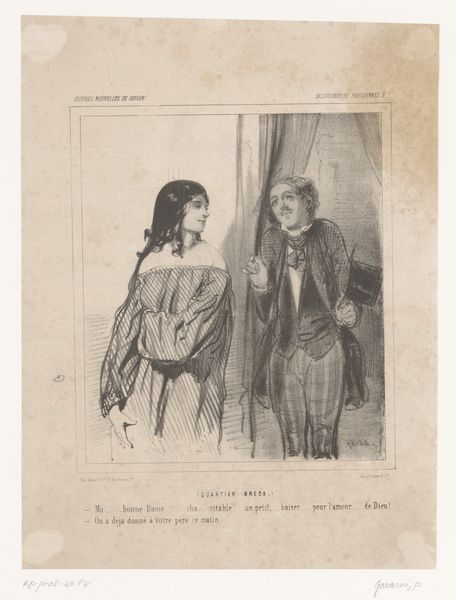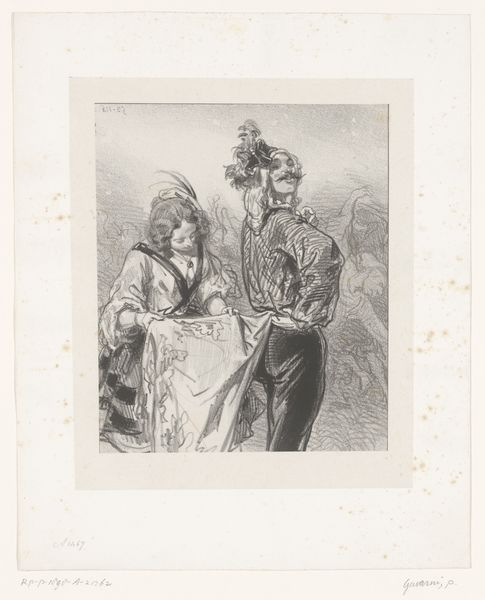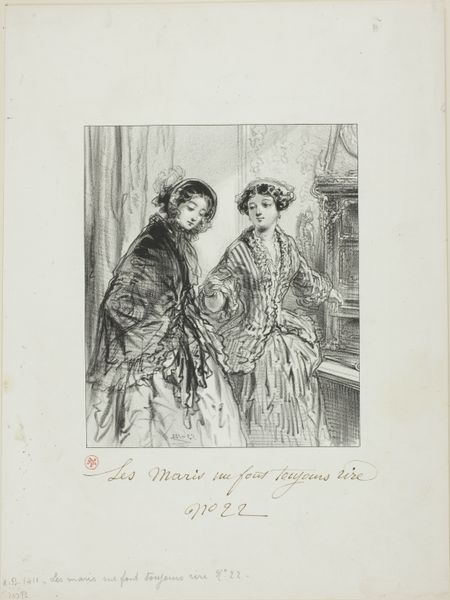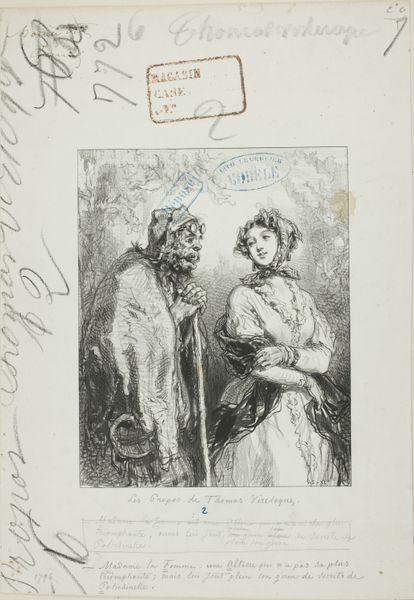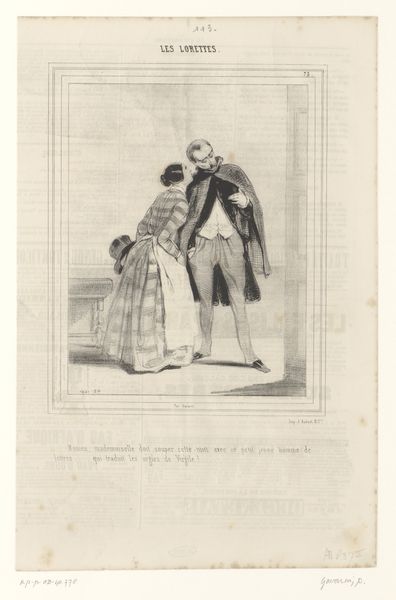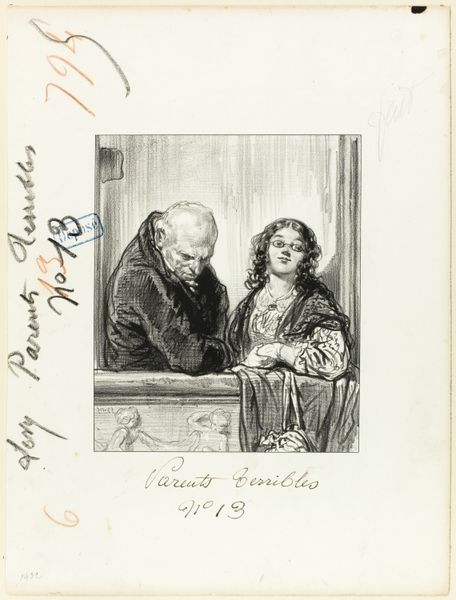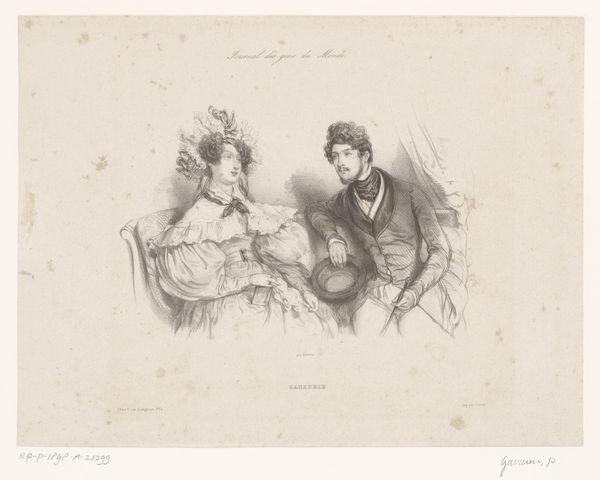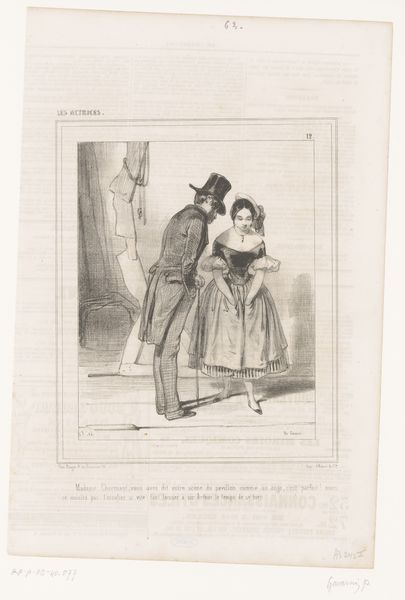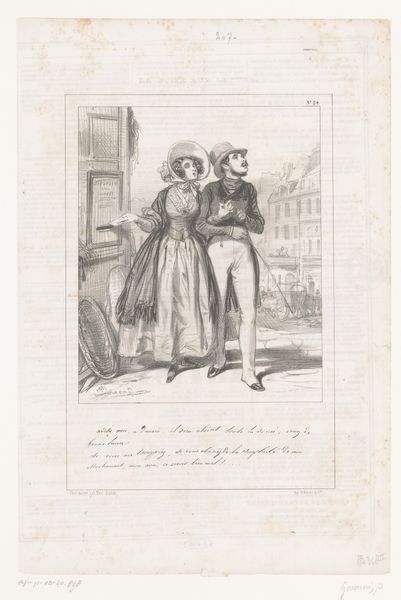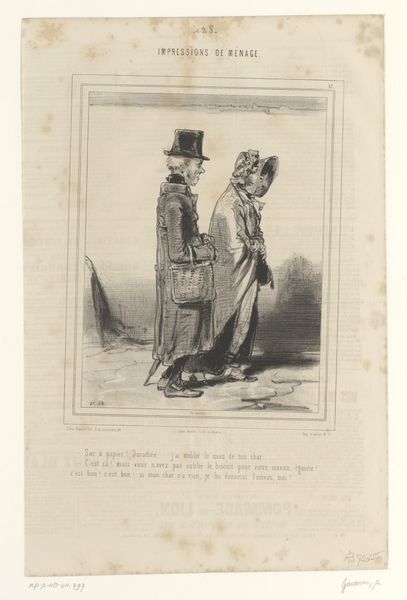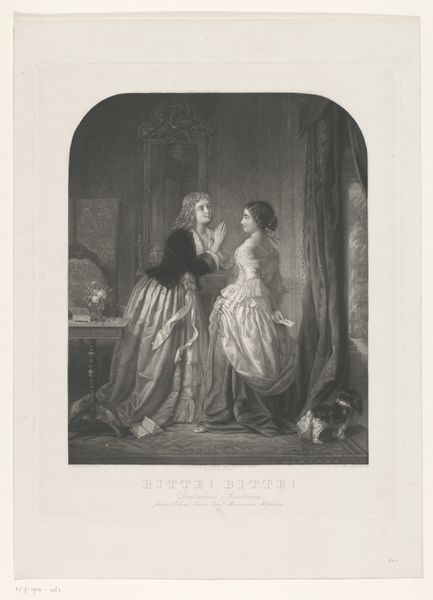
Les-Parents-Terribles series: Come, come a ball's always the same 1853
0:00
0:00
Dimensions: 194 × 162 mm (image); 359 × 271 mm (sheet)
Copyright: Public Domain
Editor: This lithograph is titled "Les-Parents-Terribles series: Come, come a ball's always the same," made by Paul Gavarni in 1853. It's part of a series, and I'm immediately struck by the contrast between the youthful woman and the much older man. There’s a tension in their proximity, and the details in the clothing versus the bare background feels intentional. What are your initial thoughts on this work? Curator: Considering its production, we must delve into the lithographic process itself. The ability to mass produce prints like these changed art consumption drastically. This work speaks to the changing social landscape of mid-19th century France. Think about the paper, the ink – these were commodities, circulating within a burgeoning capitalist system. How do you think Gavarni's choice of lithography, rather than say, painting, reflects on the work's intended audience and message? Editor: I hadn’t really considered the implications of lithography itself. Painting feels more individual and precious. So, mass-produced prints reach a broader, probably middle-class, audience. This makes the image itself, the commentary on relationships, accessible and therefore maybe more critical? Curator: Precisely! Gavarni used readily available materials to craft his commentary. The ‘parents terrible,’ the challenging of familial roles, all becomes part of this material landscape. Are they truly “terrible”, or just victims of the societal and economic shifts occurring? Do you feel Gavarni is offering a critique, or simply mirroring a recognizable reality? Editor: It's hard to tell, maybe both? I was focused on the figures, but seeing it as part of a bigger system, with materials and labor... that definitely gives me a different angle to consider. Curator: Exactly, seeing the object not just as a picture but as a product deeply embedded in its time, alters the whole interpretive framework. Editor: Definitely. I appreciate seeing the social context woven into the material aspects; it adds layers to the image. Curator: And that enriches our viewing.
Comments
No comments
Be the first to comment and join the conversation on the ultimate creative platform.
